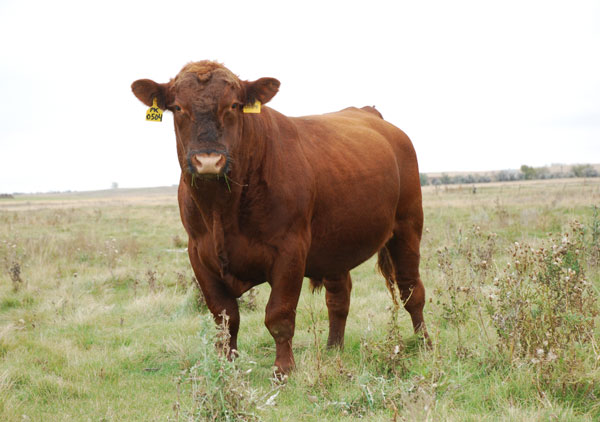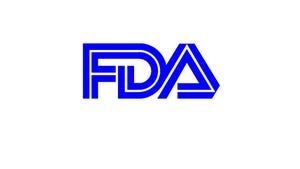5 Trending Headlines: The 6 Ps of bull buying; PLUS: A hand up for young producers
Bull buying season is nigh, and since your bull battery contributes 75% of your genetics, taking a little time to prepare ahead of the sale is time well spent. Those tips and more await you in this week’s Trending Headlines.

The 6 Ps of bull buying
Follow these six pearls of wisdom, says Bob Weaber, Extension cow-calf specialist at Kansas State University, and your bull buying endeavors may well go better this spring. Those 6 Ps? Prior, Proper Planning Precedes Profitable Purchases.
First, make sure you understand the use of Expected Progeny Differences (EPD) and selection indexes. While EPDs are not the only selection information you should consider, EPDs are the most effective tools available to describe the genetic differences between animals within and across herds.
Second, make sure you know what traits you would like to improve in your herd. What breed(s) fit in your mating system? If you are using a crossbreeding system, make sure the breed you selected fits your objectives. Other factors to consider are source of replacement heifers and endpoints for progeny marketing (weaning, back-grounded or in the beef).
Click here for more tips on preparing for your bull buying season.
Yes, it’s true. Feed your cows at night, they will calve in the daylight
Keeping watch by night of your first-calf heifers while they’re calving is just plain burdensome. However, according to Glenn Selk, Oklahoma State University emeritus Extension animal scientist, "The easiest and most practical method of inhibiting nighttime calving at present is by feeding cows at night; the physiological mechanism is unknown, but some hormonal effect may be involved,” according to the Oklahoma Farm Report.
The concept is called the Konefal method. A Canadian rancher, Gus Konefal, reported his observations in the 1970s. “In a follow-up Canadian study of 104 Hereford cows, 38.4% of a group fed at 8:00 a.m. and again at 3:00 p.m. delivered calves during the day, whereas 79.6% calved of a group fed at 11:00 a.m. and 9:00 p.m. In a more convincing study, 1,331 cows on 15 farms in Iowa were fed once daily at dusk, 85% of the calves were born between 6:00 a.m. and 6:00 p.m."
DLR offers outlook for 2017
As former Secretary of Defense Donald Rumsfeld would probably say, it’s the unknown unknowns that really get you. That’s especially true in the cattle market, where market moves tend to blindside everyone. With this in mind, the economists at the Daily Livestock Report offer their take on what 2017 might bring.
Meat demand/Consumer Preferences: “This is one of those topics we have been highlighting in our year-end review for a number of years. It is always important. We think there has been a shift in the way in which U.S. consumers approach meat protein. Fat is no longer taboo. The industry is no longer trying to eliminate all traces of fat from its products at the detriment of flavor.”
Programs give young producers a hand up
Heifer projects are often the launching point of many young producers’ herds. 4-H, FFA, breed associations, and livestock shows create a venue for raising and showing a quality female year after year. Often, project heifers are loaned, bought or gifted from family. Some programs also offer scholarship heifers to qualified applicants to give them a hand up in ownership, reports the Tri-State Livestock News.
The NILE Merit Heifer program at the Northern International Livestock Exposition in Billings, Mont., is one such program. The Cattlemen’s Family Legacy Heifer Scholarship is a similar program. A cattle producer at the Black Hills Stock Show in Rapid City, S.D., donates a heifer and a recipient is chosen from a pool of applicants through an application and interview process.
Nebraska College of Technical Agriculture in Curtis offers a heifer donation program to junior college students. The NCTA Heifer Link program launched in January 2015, as a supplement to the college’s noted 100 Beef Cow Ownership Advantage. Through Heifer Link, students have the opportunity to be assigned a breeding heifer during their fourth semester and leave campus with a bred heifer upon graduation.
U.S. ready to reinstate retaliatory tariffs against Europe

In reaction to the EU's unfair treatment of U.S. beef, The U.S. Trade Representative's office announced recently that the U.S. is poised to begin the process to reinstate tariffs on goods and products from the European Union, according to the Oklahoma Farm Report.
"In 2009, the United States and the European Union signed a memorandum of understanding in which the U.S. would temporarily suspend retaliatory tariffs on European goods," said Kent Bacus, National Cattlemen's Beef Association director of international trade. "In exchange for that, the U.S. beef industry would have duty-free access of upwards to 45,000 metric tons for beef from non-hormone treated cattle."
About the Author(s)
You May Also Like


.png?width=300&auto=webp&quality=80&disable=upscale)
